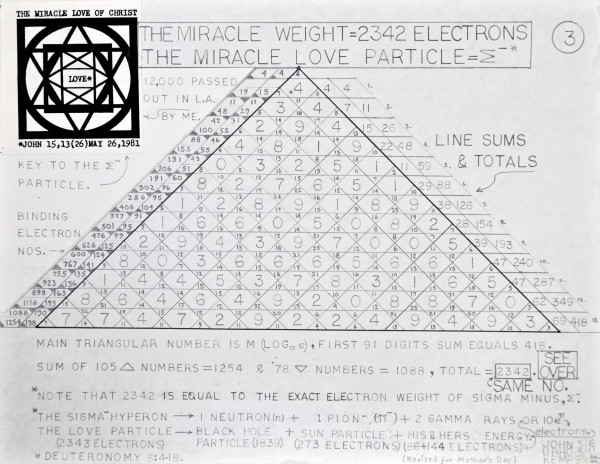Restore what has been broken. Algebra is originally the science of fractures, a fundamental thinking of fragmentations in the hope of solving them. Invented under the skies of Persia by the mathematician Al Khawarizmi, its etymology attests to it: al djabr means “healing the fractures”. So when, later on, in the Arab-Castilian lands Cervantes uses the word “algebrista”, he invokes him as the healer who will put together the broken bones of the Knight of the Mirrors.
This unknown etymology invites us to read the deeply moving works which follow as attempts to restore an order permanently lost, as moments of a certain kind of algebra. We are thinking here of the plates by Lubos Plny, which dislocate a body to shreds to re-articulate it again, fragmenting bones and members to recompose them based on humors, blood, text and tears. As if the artist was the healer of what he breaks, the algebraist of what he splits.
There is also relativistic algebra, in which the concepts of line and curve are elastic. The works here have this in common that they demonstrate the gulf in the universal maxim: a man draws a line and that line becomes a maze. That would be the inextricable maze of criss-crossing meanders: the diaphanous curves of Georgiana Houghton, the interlaced designs of Frantisek Klecka, Jeanne Tripier’s embroidered meanders on her shrouds, as if she was a Trinity of Fates, spinning, reeling and cutting the thread of fate all at once. There are also the impeccable segments of trains by David Braillon, millimetric on their rails as if to thwart the digressions of unbearable existence. For if there is an indisputable axiom of existential algebra it is that the right of one is the bend in the other.
It would be completely misguided to flatten in one brutal stroke the curves of these singular artists; and interpret as entropic that which in their approach is precisely the opposite of spreading chaos. Thus the work of Zdenek Kosek, who spent his days at the window noting the wind directions, the movement of clouds, the flight of birds, temperature changes, in school notebooks, on atlas maps, as an imposed ritual to better thwart the irreversible tumult.
The second law of thermodynamics which we apply intuitively to the anarchic course of our lives, stipulating a natural tendency to confusion, ultimately enhances the work of obsessive organization in the present works. Because entropy is not, as we say too lightly, the measure of disorder. Rather, it is the index of our ignorance of an order. And we must admit that the order of the artists remains fundamentally elusive. We can feel it without understanding it, try to express it without being able to explain it. In this sense paintings are strictly metaphysical, staggering beyond anything physics could say.
Express without explaining fractures, this is the existential challenge of mathematics: I thought I could pull some threads between the works and risk a few funambulist equations to tell them. But the works here are chasms, on the edge of which vertigo leaves us silent. Banned when facing the sky of Emery Blagdon, shaking up the universe to stir up the constellations. Confused when facing the Odyssey of George Widener, capsized in his ocean of blue Mondays. As if these algebraists had taken the step of dividing by zero, operating beyond infinity that makes everything waver.
It is probably the abyss – the common denominator of these works – that makes the thought disappear. This figure – which originally means zero – the indecipherable. A gap. Hideak Yoshikawa methodically piercing clay. Madge Gill puncturing her paintings with her whirling faces. Dan Miller’s writings, drawing over and over meandering letters to reach a black hole, writing the names of his relatives until he makes them disappear. Not to keep them silent but to formulate them infinitely in order to abolish them. These algebraists of the limits open the way to a fraction through the void, restoring dizziness, not that they seek it – it is quite the opposite – but they create it. And dizziness at the edge of the works is less about fear than the fascination with the void, hermeneutical void that is, emanating from gestures of absolute density and whose meaning inevitably eludes us. As this final work by Plny, aspiring to count the days down to ashes, and circle the disappearance by this Opalka-like count of the nights leading to this other infinite which is nothingness.
The absence of speech, which no doubt has presided over the advent of these works is a logical state of those turned to contemplate them. The maxim that closes Wittgenstein’s Logico-Philosophical Treatise seems to be the only epilogue possible when faced with the vertigo of these images: what can not be expressed must be kept silent.




